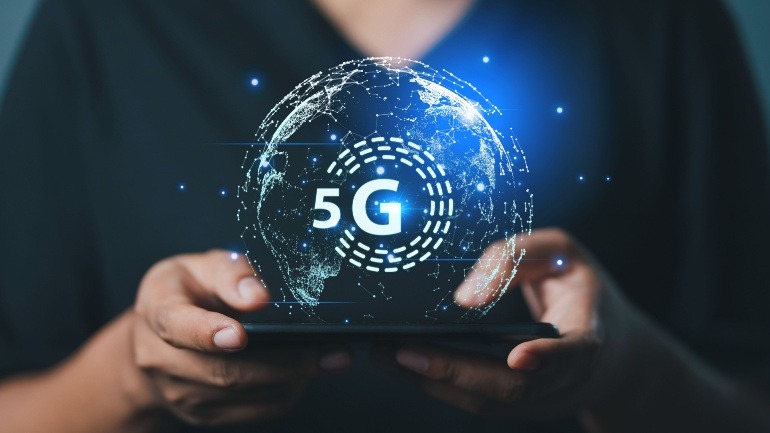In the rapidly evolving landscape of modern business, staying connected is not just a convenience; it’s an absolute necessity. The landscape of telecommunications and networking is undergoing significant transformation, with 5G wireless technology and VoIP at the forefront of these innovations. The convergence of these two powerful technologies will revolutionize the way businesses communicate, collaborate, operate, and compete.
In this comprehensive article, we will explore how the combination of 5G and VoIP is set to drastically reshape the world of business communications.
Understanding 5G and VoIP
Before we explore the synergy of 5G and VoIP, it’s essential to grasp the fundamental concepts of these technologies.
5G – A Quantum Leap in Wireless Connectivity
5G is the fifth generation of wireless networking technology and is a significant leap forward from its predecessor, 4G LTE (Long-Term Evolution). 5G offers several key features that set it apart from previous wireless services:
High-speed data transfer – 5G networks are designed to deliver significantly faster download and upload speeds when compared to their predecessors, potentially reaching up to 20 gigabits per second (Gbps).
Low latency – 5G offers ultra-low latency, allowing for nearly instantaneous data transmission. Low latency refers to the short delay or lag in the transmission of data between devices over a network. Typical round-trip delays are as low as one millisecond or less, and this feature is crucial for real-time applications.
Extensive connectivity – One of the key features of 5G is its ability to support massive connectivity. This is mainly achieved through the use of higher radio frequencies, advanced antenna technologies and network slicing. The combination of these technologies makes 5G well-suited for connecting a vast number of devices. This is especially important in the era of the Internet of Things (IoT) where billions of devices are expected to be interconnected via the internet.
Exceptional reliability – 5G is engineered for extremely high reliability with mission-critical services in mind. The 5G architecture offers enhanced network redundancy in part due to multi-connectivity capabilities. This technology allows 5G devices to connect to multiple cells or base stations and seamlessly switch to alternative connections when required.
VoIP – Revolutionizing Voice Communications
VoIP is a technology that enables voice and multimedia communications over the internet instead of using traditional telephone lines. Some core features of VoIP include:
Mobility – VoIP systems communicate via generic IP networks, meaning that devices can be used anywhere that an internet connection is available. This feature makes VoIP highly suitable for mobile connectivity and remote work.
Versatility – VoIP is highly versatile. In addition to voice calls, VoIP also supports text communication and the transmission of rich media formats such as video and images. This versatility makes VoIP ideal for modern businesses seeking to enhance collaboration, effectively support remote teams and improve efficiency.
Flexibility and scalability – One of the most compelling features of VoIP is its exceptional flexibility and scalability. Adding or removing lines and features can be done easily, making such systems suitable for businesses of all sizes, including those with dynamic communications requirements.
Reduced service costs – VoIP often provides significant cost savings when compared to traditional phone services. This advantage is especially notable in long-distance and international calling, where the use of VoIP may completely eliminate voice traffic charges.
The Synergy of 5G and VoIP: How Businesses Will Benefit
The combination of 5G and VoIP is vastly greater than the sum of its parts.
Companies that embrace 5G-VoIP compatibility will gain a competitive edge by providing an all-round, superior communication experience to the benefit of employees, partners, and customers.
Here’s how this far-reaching synergy will transform business communications:
Ubiquitous connectivity, mobile workforce empowerment, and enhanced collaboration – 5G’s mobility features and extensive coverage are a natural fit for VoIP and make VoIP services more accessible than ever. Mobile workers can consistently and seamlessly connect to the corporate VoIP system. Screen sharing, video conferencing, and real-time document collaboration become smooth and efficient processes, even for remote teams.
This high level of connectivity opens up new possibilities for remote work and telecommuting, allowing businesses to thrive in the modern, evolving workplace environment.
Real-time communication with enhanced voice and video quality – The high-speed data transmission and low latency capabilities of 5G ensure that VoIP calls, whether voice or video, are crystal clear and virtually lag-free. This almost instant exchange of voice and video data results in much higher quality communications than were previously attainable. This advancement is invaluable, especially with the rapid increase in remote work and the growing reliance on cloud-based collaboration tools.
From a business perspective, the enhanced communications translate into improved internal collaboration, highly productive meetings, and more effective customer interactions.
Superior scalability – The combination of VoIP and 5G is highly scalable, meaning that businesses can easily meet their growing connectivity requirements without having to overhaul their communication systems. This is mainly due to the virtual nature of VoIP infrastructure, together with the concept of network slicing used by 5G. Network slicing allows 5G operators to dynamically create virtualized slices of the network to efficiently meet the demands of specific customers and services.
IoT integration and Industry 4.0 – 5G technology is designed to support a vast number of devices. Therefore, the combination of 5G and VoIP is a key enabler for the Internet of Things and a wide range of applications that require numerous devices to be connected simultaneously. In addition, the low latency characteristics of 5G enables the rapid exchange of data between devices, which is critical for coordinating interconnected machines and robotics.
As a result, 5G is expected to play a crucial role in driving innovation across a wide range of industries and services, enabling the full potential of automation, the IoT and advanced manufacturing technologies.
Cost savings – VoIP is not dependent on the use of analog phone lines and therefore offers significant cost savings over traditional telephony. When VoIP is used in combination with 5G, communication expenses are further reduced due to the low-cost of data transmission over 5G networks.
The improved cost efficiencies enable businesses to communicate worldwide without incurring exorbitant expenses. This is particularly beneficial for enterprises with international operations and those supporting remote teams.
Embracing the Future of Business Communications
The combination of 5G and VoIP is highly advantageous and is revolutionizing business communications. These technologies empower businesses to interact more effectively, reduce costs, and stay competitive in an increasingly digital and mobile business landscape.
In addition, the marriage of 5G and VoIP offers great potential for innovation. Companies that leverage their dual capabilities will be better equipped to navigate and implement the rapidly evolving services demanded by smart offices and automation.
5G and VoIP are a dynamic duo that is reshaping how businesses communicate and operate. As 5G networks become more ubiquitous and VoIP continues to mature, businesses that embrace these technologies will thrive in the fast-paced, interconnected world of today and into the future.







